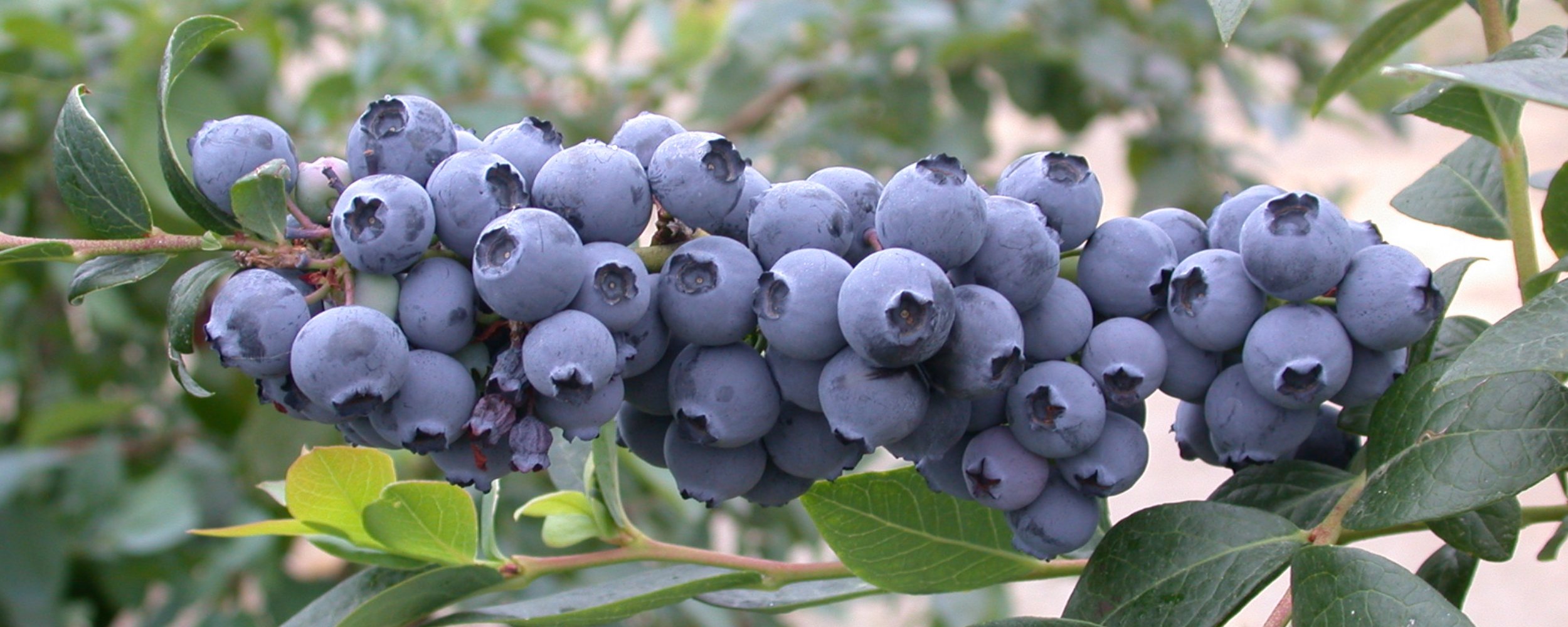Magical Blueberries
The magic of Blueberries is well known, not just for the many health benefits Blueberries provide but also for their easiness of growing, might this be in the garden, as a hedge or just a single plant in a pot on the patio. Most importantly, children love to munch on the yummy berries. They can be grown in many different positions and can be grown anywhere in New Zealand. If you have a sunny place (it doesn't have to be all day) and providing that the soil is well drained, your Blueberry will thrive.
You could say that Blueberries are the backbone of what we do at the incredible edibles® nursery. We constantly test new varieties to ensure only the best varieties are on the market and supply many commercial growers with Blueberry plants. It is possible that the Blueberries you bought from the supermarket have come from plants that have come from the incredible edibles® nursery.
How to choose the right Blueberry variety
All Blueberries are self-fertile, meaning no other Blueberry plants are required to get the Blueberries. Having said that, having additional Blueberry plants will improve pollination and resulting in more fruit on the plant. If you have the space, we recommend having at least two Blueberry plants in the garden (Note, they don't have to be side by side). In addition, get two varieties that fruit closely behind each other this way, you have a longer picking season and get the benefits of cross-pollination.
In addition, some Blueberry varieties produce beautiful autumn foliage colours (especially in regions where you have an evident change of season), which may be something to keep in mind. In most areas, Blueberries will drop their leaves. It is also known that when Blueberries get winter chill, it helps initiate flowers for the following season (and hence more fruit). If you are in a region where the likelihood of late frosts is relatively high, pick a variety that fruits a little later, as late frosts can burn the flowers and prevent fruit from setting.
If you have the luxury of being able to plant a hedge of Blueberries, pick just the one variety that suits the look you prefer (compact, upright or arching). This way, you will have an excellent uniform hedge. Just check that the harvest time is most suitable for your region, and make sure you only trim once the fruit has been harvested.
Any of the varieties are suitable to be used for our favourite Blueberry Muffins. Our Favourite Blueberry Muffin recipe.
Pruning of Blueberry plants
To help understand the correct pruning method, it helps to know when the flower buds are formed, as we must have as many flowers as possible. Flower buds are formed on the outer parts of the current season's growth in late summer as the stems mature. Fruit is borne on last season's wood; vigorous wood bears the largest fruit. Minimum pruning involves removing dead or diseased wood, weak growth, and old twiggy branches. After 4-5 years, the oldest branches may need cutting back to the crown to encourage vigorous new growth. Pruning to shape may be done at any time, but if heavy pruning, it is best done in winter dormancy.
Fertilising and pest - disease control
In the garden, Blueberries require only a light application of a balanced fertiliser (N, P, K), in the first three or four years, at the start of the growing season. Continually adding compost and mulch around the plant will generally supply their needs. The soil environment created by adding the compost or mulch gives a perfect environment for Blueberries to be and stay a healthy plant. Blueberries grown in pots require light applications of slow-release fertiliser at least twice a year. In addition, the plants will benefit from a periodic application of your favourite liquid fertiliser. Mulch is just as important in a container; this will help keep your Blueberry plant healthy. When your plant has outgrown the container but would like to keep the Blueberry in this container, you can carefully remove the Blueberry from the container, prune the roots by 50% as well as the foliage by 50%, and repot (with a fresh container mix) back into the container. Ideally, this gets done during the winter dormancy, and you might lose one season of Blueberries. It is essential to provide adequate watering when you grow a Blueberry in a container by ensuring the plant does not dry out over the summer months.
Blueberry plants are naturally resistant to many common pests and diseases. Phytophthora root rot is the most severe disease and can be a problem on waterlogged soils, ensure you plant in the ground with good drainage or raise the garden to create the drainage. Birds can cause serious damage to fruit, so netting is advised.



